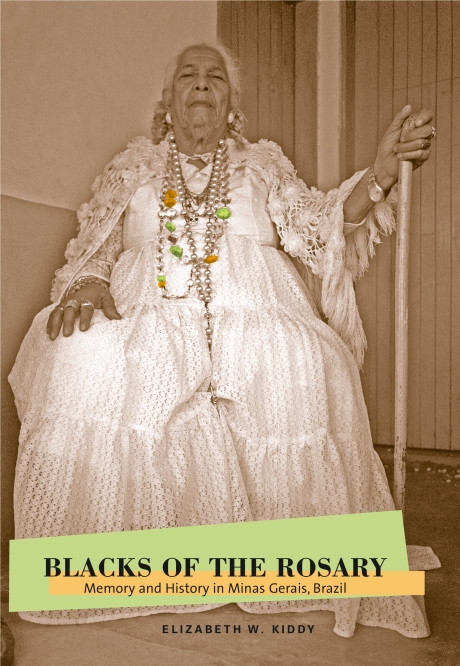The Forgotten DiasporaPosted in Articles, Caribbean/Latin America, History, Media Archive, Slavery, United Kingdom on 2012-05-04 02:52Z by Steven |
The Official Gateway to Scotland
2008
Geoff Palmer, Professor Emeritus in the School of Life Sciences
Heriot-Watt University
I was born in Jamaica in 1940, the largest British island in the Caribbean. I emigrated to London in 1955 to join my mother and earn a living. She had emigrated in 1948.
In 1967 I completed a PhD at Edinburgh University. Now retired, I was a cereal grain scientist and lectured at Heriot-Watt University, Edinburgh on the science and technology of brewing and distilling. I have had the good fortune to represent Heriot-Watt and Scotland in these disciplines all over the world. A most memorable visit was to Africa to help with the growth and processing of the tropical grain, sorghum. Before a lecture a young African spoke to me in a local language believing I was a company representative. He was angry! Now, although my ancestors may have come from that part of Africa, I had no idea what was being said to me. One of my African ex-students over-heard the young man, laughed and explained he was asking, “Why is the company sending a Scotsman to speak to us?”
During a visit to Register House, Edinburgh last year I noticed a poster referring to “The distribution of Scottish people around the world”. With a smile I said to my host that I hoped people of Scottish descent in the Caribbean were included in this survey of the Scottish Diaspora. He turned and said goodbye quickly to get away from a Jamaican who had suddenly taken leave of his senses. Talking about Scottish-Caribbean history elsewhere in Scotland elicited similar responses.
In 2007, the British government decreed that the 200th anniversary of the abolition of the British slave trade should be commemorated, a trade which had started in 1562. Many commemorative events took place and I was asked to give lectures to Scottish historical societies and various organisations in Scotland and England.
In contrast to my knowledge of brewing, distilling and cereal grains, my knowledge of the history of British/Scottish slavery in the Caribbean was limited. To prepare myself for the lectures I did some research and completed a small book on the consequences of British slavery, especially with regard to Jamaicans…
…It is estimated that 20,000,000 African people were bought or captured in Africa and transported into New World slavery. Only about half survived to work on the plantations. However, even Adam Smith was impressed by the profitability of this free land, free labour, business called Chattel slavery. The terrible and unique feature of this slavery was that legally slaves had “no right to life”. The working life of a field slave was about five years. Those who compare this slavery with other kinds of inhuman behaviour such as trafficking are being unfair to all such terrible activities…
…How did the Scots join the slave business? Originally officially excluded from the English slave trade, Scots such as Colonel John Campbell left the failed Scottish colonial experiment in Darien, Panama and arrived in Jamaica between 1697 and 1700. He had a large family in Jamaica and died there in 1740, initiating the spread of the name Campbell all over the island. Today there are many more Campbells in Jamaica per acre than in Scotland. In 1707 Scottish politicians signed 25 Acts to unify the parliaments of Scotland and England. The Act that was signed first was Act 4 which allowed the Scots to join the English slave business. Young Scotsmen rushed to the Caribbean to make quick fortunes as slave masters, slave doctors and administrators. The great economic benefits of Caribbean slavery to Scotland were clearly apparent to Robert Burns who wrote a toast honouring the “Memory of those on the 12th that we lost’, commemorating one of the most gruesome and crucial naval battles fought between the French, Spanish and the British. The prize was Jamaica. Like other young Scotsmen who wanted to change their lives making money from slavery, Burns bought his ticket for Jamaica in 1786, intending to sail from Greenock with Highland Mary but his new book of poems sold well and he did not sail. Later, Burns’ new lady friend, Clarinda (Mrs McLehose), sailed to Jamaica to discuss the state of her marriage with her husband, a slave master. On her return she told Burns her husband told her to return to Edinburgh as he was quite happy in Jamaica with his “ebony woman and mahogany children”.
Many Scottish and English slave masters had children with their slaves. Robert Wedderburn (abolitionist) was the Jamaican mixed race son of Scottish slave master James Wedderburn and his black slave Rosanna. Many Caribbean people are of mixed race and many of us are descended from Scottish slave masters. It is therefore enlightening that the national motto of Jamaica is: Out of Many One People. My late mother’s family name is Larmond a mis-spelling of Lamont. The issue of surnames has been a matter of debate between the descendants of slaves but I feel that our lost African names and our present Scottish/British surnames are all part of a history that cannot be changed. My ancestors came out of a cruel slavery and chose the family surnames. I see no reason why I should alter the choice they made. I am proud that our slave ancestors endured and produced proud nations of black people in the New World. My mother’s forefathers, like others who gained a small piece of land after slavery, described themselves as “planters” the same name used to describe white slave-plantation owners. A small but significant statement of ‘equality in position’…
Read the entire article here.

